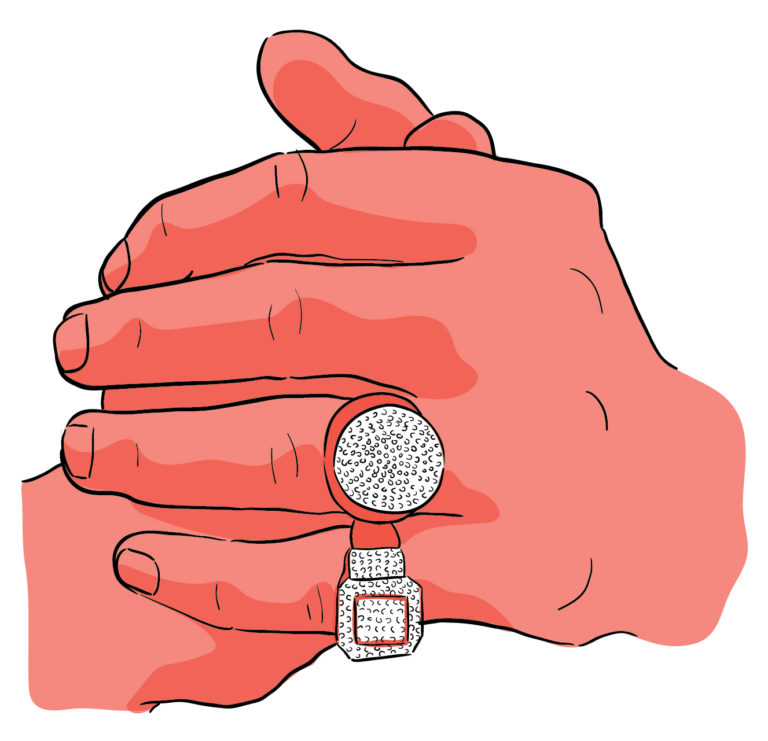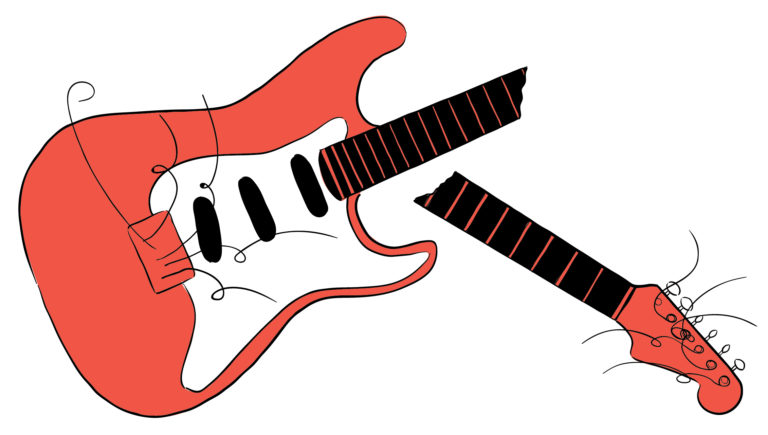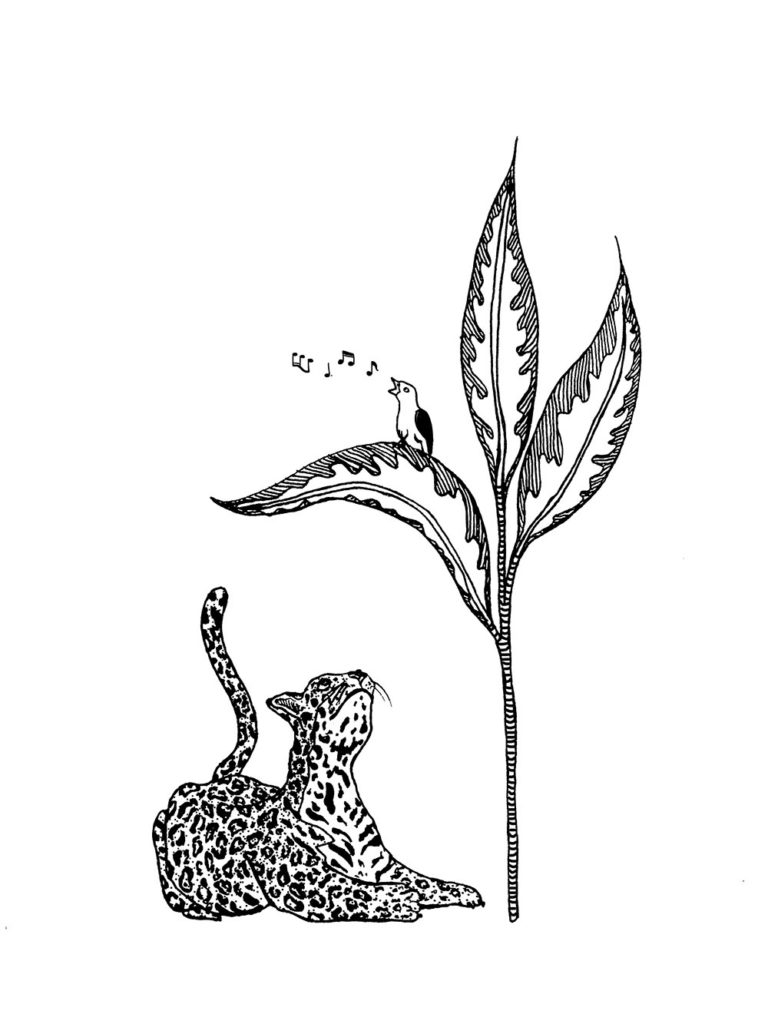
The spirit is present.
On the evening of Thursday, January 13, 1972, as the audience assembled in the New Temple Missionary Baptist Church in Watts, Los Angeles, the Reverend James Cleveland instructed the crowd not to be bashful as movie cameras swirled around them. There was no guarantee that the cameras would return, he told folks as they slid into the pews and made themselves comfortable. “So while it’s coming your way, get in on it,” he joked, encouraging his flock to make their enthusiasm for that evening’s service evident to director Sydney Pollack and his camera crew.
Cleveland’s encouragement wasn’t really necessary: this was the first of two evenings marking Aretha Franklin’s much-anticipated return to gospel. It probably didn’t matter that Pollack and his crew were roaming around the sanctuary that night and the next; the congregation was ready to receive Franklin regardless of the third-party presence.
And receive her they did.
Amazing Grace, the film documenting that two-night live recording of the titular album, finally saw release in 2018, after a nearly fifty-year delay. By 1972, Franklin was undeniably a pop star, and Pollack captures her as such. She is the film’s magisterial Queen of Soul: her Afro is perfectly shaped, her skin is flawless, and her metallic eye shadow gleams under the camera crew’s lights. At one point, the camera is trained in on her restrained, stately smile as she squeezes the hands of fans reaching out to her from the pews. At the pulpit, she is a poised and attentive performer; when the opening of “Climbing Higher Mountains” isn’t to her liking, she turns to Cleveland and requests that she and the choir try it “one more time.”
Yet Franklin, a daughter of the black Baptist church, knew quite well what happens when worshippers gather. She guided the audience assembled at New Temple that weekend into an extended worship service that showed how firmly rooted she was in the music of the church. Amazing Grace supposedly brought her back to gospel music, and would go on to become the best-selling gospel album of all time, but the fact is that Franklin never left the church. Even as the film demonstrates her commanding, diva-esque presence, we also see how deeply attuned she was to the unspoken codes of the gospel ethos that shaped her. This is to say, the spirit was present.
The spirit is present when the Southern California Community Choir marches down the aisles and into the makeshift choir loft, clad in silver vests, their bodies swaying in that familiar church way, taking their places behind Franklin’s pulpit. It’s present when the Reverend James Cleveland, who accompanies Franklin on the piano, abruptly walks away from the instrument during Franklin’s rendition of “Amazing Grace,” takes a seat in a nearby pew, and begins to weep. It’s present when Clara Ward, Franklin’s mentor and a gospel legend in her own right, throws her hands up in a moment of praise. It’s present as two women begin to shout and dance in the aisles, their bodies attuned to the divine. Their dancing is an act of transcendence, their arms loose, their eyes closed, their heads bobbing, their feet moving rapidly to a rhythm that has slipped the earthly plane.
Franklin understands what it means to be a vessel for the spirit, and how to transmit that spirit to her fellow worshippers. We are at a concert, but we are also at church. Her performance gives way to the beauty of a tradition that is not restricted to a set of religious tenets. We witness the black church in all its complexity: as a site of faith and black ensemble, a house of worship, and a cultural lexicon.
From my own seat in the Washington, DC, theater where I first viewed the film, I felt the spirit, too, as I was transported back to the small church that defined the early parts of my childhood. When I was young, I loved the way a gospel song filled the church’s halls. I was awed by the glamour of my maternal grandparents, whose arrival at service I’d anxiously await, daring anyone to tell me they weren’t the best dressed in the house. I loved the way every adult around me became an aunt or an uncle or a godparent charged with my care. I yearned for the day when I’d be old enough to stand before the congregation to give the morning announcements, smiling at them as they smiled back at me. And after the service, as the lemonade was made and the greens simmered and someone hollered during an intense game of spades, Franklin would be leading the evening round of praise and worship from the kitchen radio.
It was in the Baptist church that I first learned about the style and cool and grace of black folks.
It is still the house of worship where I feel most at home, where I tend to know what might be said before it is actually said, the pauses and stutters, the hallelujahs and the amens.
The church gave me Aretha Franklin.
In one of the film’s few scenes that offer a glimpse of the rehearsal process, Franklin appears at the mic in a striking yellow-striped pantsuit and red overcoat, as the opening chords of “How I Got Over” are played on the piano. Franklin begins to clap, then double clap, before coming back to the mic to sing those opening lines: “How I got over.” The film cuts back to the concert, Franklin at the pulpit again, Alexander Hamilton, the choir director, behind her, rocking and bouncing as he conducts. The camera pans to the crowd and they’re on their feet. Clapping. Then double clapping. Franklin was calling on them to testify.
All this is on display as Pollack’s cameras glide through the church, capturing the updos, the three-piece suits, the furs, the bell-bottoms, the raised arms, the closed eyes, the grins, the tambourines, the tears, the haint-blue wall paint, the foot taps, the clasped hands, the painting of Jesus, the joy, and back, finally, to Franklin. He does not shy away from the tight shot, as it becomes an effective tool for communicating the timbre of Franklin’s vocal power and the consequence of her physical presence. We see the beads of sweat on her brow as her voice penetrates the sanctuary. And when Cleveland joins her at the pulpit as she concludes “Amazing Grace,” Pollack lingers on Cleveland’s and Franklin’s hands, which are joined tightly behind Franklin’s back. Sure, Franklin is doing her job. She calls, always poised and controlled. The audience responds: “Sing it, ’Retha! Take your time!” But she is also taking them—us—to a higher place. This is freedom work, I think. Isn’t this what she did best?
So by the time her father, the Reverend C. L. Franklin, the famed civil rights minister, takes to the pulpit to greet the crowd, it becomes tempting to assume we have reached the weekend’s conclusion. Aretha Franklin is now seated at the piano, to the right of her father. She watches him speak, with a reverence, if not a demureness, that is said to have defined their relationship. It is clear that she is tired—a familiar exhaustion, undoubtedly. She has ushered in the spirit, a task that overwhelms even as it inspires. As her father returns to his seat, Cleveland introduces the final song, “Never Grow Old.” Franklin prepares herself at the piano, and we—the crowd that evening in 1972, and those of us who find ourselves watching in 2019, as if time had collapsed—prepare to cross the altar’s threshold.
Jessica Lynne

Guest Critic: Jamel Brinkley
“All art constantly aspires towards the condition of music.” This statement, by the English critic and essayist Walter Pater, has been echoed in the particular context of African American literature. For example, Amiri Baraka said that “there has never been an equivalent to Duke Ellington or Louis Armstrong in Negro writing.” Of course, the truth is probably more complicated. Arts of all kinds borrow from one other. Ellington himself wanted his music to aspire to the condition of Harlem Renaissance writing by Countee Cullen and others. But still, there’s just something about music, isn’t there? For my column I chose three songs that have inspired me, and that demonstrate some qualities that my writing has reached for.
1. “Brooklyn Zoo,” Return to the 36 Chambers: The Dirty Version—Ol’ Dirty Bastard (1995)
This song—departed Wu-Tang Clan member Ol’ Dirty Bastard’s debut single as a solo artist—is somehow both aural and deeply tactile. You not only hear how raw and gritty his voice and music are; you feel them active on your skin. (Early in the music video for “Brooklyn Zoo,” which is set in a grimy apartment building hallway, Dirty picks his nose and smears the mucus onto a wall.) As unpleasant as it may sound, this kind of atmosphere and texture—the lack of a too-easy fluidity—is a quality I admire and often try to work into my sentences. In his Paris Review interview, Philip Roth talks about how a term related to fluidity, fluency, can be a problem in writing—“a sign that nothing is happening.” He notes, instead, that what you might be looking for is “what’s going to resist you. You’re looking for trouble.” Dirty’s rhyming over the jarring piano chords on this song sounds like trouble to me, the kind of trouble that pushes you around, that rattles your nerves and makes you move. But the song also makes a great argument for profluence, for keeping things moving steadily forward without a pause or a break: there’s no chorus to interrupt Dirty’s lyrics, which cascade forth in one long verse. Along the way, Dirty textures his rhymes with a brilliant array of verbal and vocal techniques: he uses onomatopoeia, he croons, he rants, he gasps. The hook—“Shame on you, when you step through to / the Ol’ Dirty Bastard, Brooklyn Zoo!”—arrives only at the very end, when all the song’s boasting is done. I love the energy and itchiness of “Brooklyn Zoo,” which speak to Dirty’s unflappable confidence in his voice and all of its idiosyncrasies.
2. “Triptych: Prayer/Protest/Peace,” We Insist! Max Roach’s Freedom Now Suite—Max Roach and Abbey Lincoln (1960)
Abbey Lincoln’s voice here, always in wordless conversation with Roach’s drumming, ranges from the operatic vocals of “prayer” to the powerful screaming and screeching of “protest” to the exhausted singing and exhaling of “peace.” Aside from the more extreme sound of “protest,” Lincoln is giving us the kind of keening, humming, and sighing you might hear from your auntie or grandmother, if your auntie or grandmother were a musical genius. I can think of no more vivid example of what the writer Nathaniel Mackey refers to as “telling inarticulacy.” Here’s how he explains it: “Everyone talks about the speechlike qualities of instruments as they’re played in African-American music. Built into that is some kind of dissatisfaction with—if not critique of—the limits of conventionally articulate speech, verbal speech. One of the reasons the music so often goes over into non-speech—moaning, humming, shouts, nonsense lyrics, scat—is to say, among other things, that the realm of conventionally articulate speech is not sufficient for saying what needs to be said.” I like what this notion, rooted in black culture, suggests in terms of the possibilities for fiction more generally, the way it takes a fairly commonplace set of notions regarding the craft of writing dialogue—don’t have your characters be too articulate; don’t have them directly say what they mean; develop the subtext of what they say—and pushes it to the extreme. Sometimes all your characters can do is moan or scream; sometimes all they can do is exhale and, quite loudly, say nothing at all.
3. “Water,” Phrenology—the Roots (2002)
In “Water,” Black Thought raps about former Roots member Malik B., who left the group for various reasons—including, apparently, drug abuse. The beginning of the first verse feels like a meta-commentary on how the song will work, or how any good narrative should work: “They say a record ain’t nothing if it’s not touching, gripping, / draw you in closer, make you want to listen to it. / And if you real ill at making music / the listener feel like he living through it…” From there the song dives into how Thought met Malik B. and their dreams of being professional musicians. Their early struggles to establish themselves are vividly described—“We done rocked shows abroad and slept on floors, / trying to figure what the fuck we getting slept on for”—as are the temptations and effects of drugs. In the first verse, Thought raps, “I got fam that can’t stop druggin’. They can’t sleep, / they can’t stick to one subject, they can’t eat”; later, he offers, “Copped codeine by the quarts and keep coming, / dumbin’, just embracing the dope like it’s a woman, / you burnin’ both sides of the rope and just pullin’…” The song isn’t afraid to risk sentimentality, an open expression of emotion that works because of the strength of the story we’ve already gotten and because the emotion is quickly seated in a solid, powerful image, which is Thought’s strategy throughout. Here’s an example, a lightly surreal simile describing Malik B.’s home: “And I don’t say I love you, ’cause the way I feel is greater, / and M-Ila, you a poet, son, you a born creator. / And this’ll probably dawn on you later, it’s in your nature, / lyrics all on your walls like they made of paper.” In “Water,” Black Thought also isn’t afraid to shift scale and generalize, even sermonize: “If they don’t got a man like mine, they got a cousin. / Ayo, you better be a true friend to him / before the shit put an end to him, or give a pen to him, / or lock him in the studio with a mic / ’Cause on the real, it might save his life.” A song that could easily become a dull anti-drug slogan becomes a work of art because of excellent music, featuring a stiffly punching bass line sampled from “Her Story” by the Flying Lizards, and because of the moves Black Thought makes as a narrator, fully aware that theme is best delivered and understood after the story has heated up and cooled down.
Jamel Brinkley

Feelings are great, but is cash better?
“My Favorite Things” was written in 1958 by Richard Rodgers and Oscar Hammerstein II for their musical The Sound of Music, and performed by Julie Andrews in the 1965 film version. As an ornery nun hired to be a governess, Andrews teaches the song to the aristocratic military brats under her ward when they are deathly afraid of a thunderstorm. They’ll have bigger worries soon enough, but whether the Von Trapp kids are ducking under pillows to hide from lightning or sneaking out the back door of a theater to escape gun-toting Nazis, “My Favorite Things” functions apotropaically, as a list poem that wards off imaginary and real terrors. The favorite things it praises are benign, inexpensive, and innocent: raindrops on roses, whiskers on kittens, snowflakes that stay on your nose and eyelashes, snug mittens.
One might argue that the genius of “My Favorite Things” is its reality-defying catchiness. If you have “My Favorite Things” stuck in your head, as I now do, you feel compelled to obey its tyrannical optimism by virtue of its melodic prowess. Even if you do not personally care for kittens’ whiskers, you can just replace the words with your own favorite things: “vermouth on ice cubes and Humboldt sativa.” You don’t even need words, as John Coltrane’s transcendent interpretations prove.
Ariana Grande, a singer who you just know was the kind of adolescent theater kid who had The Sound of Music memorized, leverages the irresistible hook of “My Favorite Things” on “7 Rings,” the most expensive and baroque song on her new album, Thank U, Next. As many critics have pointed out, Thank U, Next departs from the grandeur of her previous effort, Sweetener, a collection of three-minute tours de force composed largely by elite squads of major pop warlocks. If she sang directly into the ears of God on Sweetener, here she’s talking to us. The songs are personal, and seeing as Grande is one of the most Cancer artists of all time, they are convincing when they batten the extremes of personal pathos. When I listen to Grande complain about being so rich and famous in “Fake Smile,” I feel something that I recognize, with some surprise, as soft sympathy. Our fiscal experiences are nowhere near commensurate, but when I listen to Thank U, Next, I hear a vulnerable, proud, and sincere album.
And then there’s “7 Rings.” Grande repurposes the melody, cadence, and sequential logic of “My Favorite Things” and makes her translation particular. Whereas Rodgers and Hammerstein’s list tallies the rare, the banal, the minor, and the cheap, the items on Grande’s shopping list are much easier to attain, providing you have unlimited financial resources. Pretty much everything she wants is available at an upscale mall. Grande’s catalog of desirable commodities reflects the price of obtaining the permissions for her sample.
If “My Favorite Things”—set against the historic backdrop of the Nazis’ ascent and compulsory complicity in Hitler’s ideology—risks being risible with its wildly lavish praise of cute pets and home-cooked meals, “7 Rings” raises a new set of questions. In contrast to the vulnerability, oversharing, and baroque pathos that dominate most of Thank U, Next, “7 Rings” seems to suggest that feelings are great… but cash is even better:
Whoever said money can’t solve
your problems
must not have had enough money to
solve ’em.
They say, “Which one?” I say, “Nah,
I want all of ’em.”
Happiness is the same price as
red-bottoms.
Grande’s vocal approach is singular in this song. Throughout Thank U, Next, her voice probes pain and longing, scraping the bottom of the lofty climes of the whistle register before dropping just as nimbly into an almost gravelly purr. In “7 Rings” she holds back the octave-defying virtuosity and elects instead to mimic trap motifs and rhythms.
Still, however debased we decide Grande’s contemporary interpretation of “My Favorite Things” might be, at least her team had the manners to compensate the copyright holders. That’s not the case for another primary source for “7 Rings”: Princess Nokia’s “Mine.” “Mine” is a polemic against white girls and their irresistible urge to fondle and handle black women’s hair. Grande’s “You like my hair? / Gee thanks, just bought it” indubitably draws from the subject and cadence of “Mine,” whose oft-repeated refrain is “It’s mine. / I bought it.”
Of course, Grande’s “borrowing” from Nokia’s song has a particularly troubled context. “Mine” emerges from the racist discourse around black women’s hair, a fraught subject constantly productive of micro- and not-so-microaggression. Grande, quickly reacting to criticism for this unpaid appropriation, released a remix with 2 Chainz. But recruiting the greatest rapper alive cannot solve this problem. Not even if the sound of his voice is one of our favorite things.
The song is built upon two sources, and Grande’s attitude toward them differs based on what she feels she can and simply can’t take. She confirms her reverence for a classic show tune, delivered by precious little blond Austrians, with a check. Nokia is not afforded the same respect; for Grande, Nokia’s work—and the larger milieu of contemporary black composition and language—essentially become one of the beautiful objects she longs to have and thereby claim. Even in the lyrics of “7 Rings,” she doubles down on this casual burlesque, iterating in its most succinct terms the famous white prerogative to consume: “I see it, I like it, I want it, I got it.”
Brandon Brown

Flamboyant despair
If prostitution is the oldest profession, pimping is the oldest form of taxation. The commission that pimps levy on a transaction that they take no part in—money for sex work—is profoundly, deliriously extractive. Pimping is, by definition, easy. That’s kind of the point. But to hear pimps tell it, it’s hard out there, and in the 1999 documentary American Pimp, brothers Allen and Albert Hughes lend pimps an ear.
They have a lot to say. Filmed in cars, parks, hotel rooms, and on golf courses and main drags, the subjects of American Pimp—all of them black men—are as quotable as they are knavish. Chattering away in prim suits and with confident grins, they exude a dark and desperate charisma that the Hughes brothers capture agnostically. The pimps speak without interruption for the duration of the film, outside of some iconic clips from films like The Mack, Dolemite, and Willie Dynamite. Shown in all their grotesque vainglory, they detail their methods with pride, never turning off the charm or downplaying the bottom line. The result is a collection of frank monologues by black men who will spare no one in their pursuit of money. They preach the prosperity gospel of the Church of the Hustle.
But American Pimp isn’t apolitical. Pulling at some of the same threads they wove in Menace II Society and Dead Presidents, the Hughes brothers explore the false division between the criminal underworld and the lawful mainstream. The directors aren’t sympathetic, though. They also present pimps as con men, abusers, and sophists engaged in a brutally exploitative business. The women they pimp are perpetually gaslit and insulted, and although no violence occurs on-screen, it’s visible in the mechanics of the trade. The pomp and confidence of the pimps unambiguously come at the expense of their overworked and underpaid workforce.
This tension between the pimps’ stylish self-possession and the abusive nature of their enterprise might be what’s turned them into muses in the two decades since American Pimp was released. Rappers have drawn on the film regularly, finding a range of uses for it in skits, interludes, hooks, and even monikers. The references and samples never feel accidental. While hip-hop’s admiration for pimps predates the documentary, and pimps were complicated icons in black culture long before rap’s arrival, American Pimp has become the object of devotional, academic veneration in hip-hop.
Washington, DC, rapper GoldLink, for instance, whose stage name was born from his initial encounter with the documentary, describes his first viewing as if it was a religious conversion: “I skipped school one day, I watched a documentary that changed my life,” he said in a 2015 interview with radio station Hot 97. “After the documentary, I was like, ‘If I was a pimp, what would my name be?’ GoldLink.”
For rapper and producer Roc Marciano, American Pimp reflects the American dream. In dense and woozy compositions that invoke pimps like Gorgeous Dre and Rosebudd as if they were patron saints, the documentary takes on the air of scripture. Marciano’s twin albums Rosebudd’s Revenge (2017) and RR2: The Bitter Dose (2018) lionize pimps as uncompromising go-getters and sophisticates. Over jazz and funk samples slowed to the drip of molasses, he relishes every image and paints his world in, well, gorgeous detail. “Me and my lady slow kiss, low in the hot tub soakin’. / Michael Bolton, soft word spoken,” he raps on “Burkina Faso.” He enunciates words with palpable satisfaction; as they roll off his tongue, you can hear him considering their mouthfeel. Watching his idols has taught him to discover and savor the power of his own voice.
That sense of discovery—of a new world, of a new self—is a through line in rappers’ nods to the film. It is not entirely pleasant, though. “Fuck Up the Sheraton,” a song by Atlanta rapper Father, samples a bizarre flex by Rosebudd: “Revlon bought my nails. They was like an inch long and I sold all ten of them. / They all used to grow like that because all I did was peel money and touch bitches.” In Father’s hands, the quote becomes a distillation of his character and goals: “Peel money, touch bitches. / Peel money, touch bitches,” he chants with proud focus. In the context of his album I’m a Piece of Shit, a candid account of decadence and depression, the song serves as a perverse mantra.Through Rosebudd, Father simultaneously finds his inner lothario and recognizes that he ain’t shit.
That bedrock of self-loathing and hopelessness pairs well with rap because, in its best moments, American Pimp is frank about the despair underlying the pimps’ flamboyance. When the Hughes brothers’ cameras scrutinize the pimps, they don’t look so impressive: their perms are wiry, their suits are clownish, their talk is cheap. Rapper Jean Grae highlights this reality in her song “American Pimp,” which recounts twin tales of a pimp and a prostitute self-destructing as they are ground down by the trade’s realities. Sex work is work, after all, and in the absence of legal protections, peril is omnipresent. By pulling back the veil, the Hughes brothers convert the lore of pimping into something embodied and concrete, ugly and American.
In a 1999 interview in Filmmaker magazine, Albert Hughes described the title as an epiphany. “We thought it would be interesting to put ‘American’ and ‘pimp’ in the same title, because nobody would think to put those together. They think of pimping as a Black, seedy thing. But it is as American as apple pie. It’s also American in the sense that [pimping is] capitalism at its best,” he said. Ultimately, rappers have turned to these pimps because they, too, have recognized the gap between this country’s promises and its reality. For better and for worse, that discovery has emboldened rappers to think of pimping as a blueprint for the failed, exploitative American dream. Pimping is easy, but as it turns out, it is hard out here.
Stephen Kearse

The last rock novel
I half wish that Jeff Jackson had published his novel Destroy All Monsters before the mass shooting at Mandalay Bay made the prospect of gun violence at live-music venues feel imminently possible. If the book had appeared in, say, 1998, the shootings rendered therein would function as Jackson intends them—as metaphors for our reduced interest in rock music, instead of as painful reminders of our inability to right obvious wrongs. Jackson tells the story of a contemporary music scene that dissolves amid a nationwide epidemic of shootings targeting musicians during live performances. While the attacks are ostensibly responsible for rock’s decline, Xenie, a singer from the fictional Arcadia music scene and the girlfriend of a slain musician, voices the novel’s tough love for the genre: “I finally had to admit that music no longer excited me.” The truth that the passion for rock burned out before the deaths mounted is more damning than any lone-gunman theory. The murders feel like emphatic, final gestures severing our connection to a form that refuses to fade away on its own. Jackson’s dystopian vision of rock’s violent death dramatizes an emotional break from the music, similar to what Xenie experiences after deleting her dead boyfriend’s oeuvre. “As soon as I did,” she says, “there was this huge sense of relief. It’s the only thing I’ve done that’s made me feel better.” Jackson subtitles the book The Last Rock Novel, but I’m struck by what he has to say about the waning of more immediate and stultified expressions of rock culture—concerts, clubs, and the music itself. The rock novel, by contrast, seems like the perfect contemporary medium for exploring this world: it allows us to balance a reverence for rock history and culture with the need to imagine new trajectories for the music, and at a safe distance from which to come to terms with its loosening hold over us. I wouldn’t recommend getting any closer.
Art Edwards

Three Microreviews
Imagine you’re standing on a beach. It’s a beautiful day. Not a cloud in the sky. You dip your toe in the water to find that it’s as warm as a bubble bath and so salty it’s almost slippery between your toes.
1. Heaven & Earth, Kamasi Washington
Then there’s a disturbance. You hear people scream. You look up. A wave seven hundred feet tall carrying the history of human pain and suffering and struggle and beauty and brilliance and resilience and hope is closing in at an impossible speed. It crests above the beach and devastates everything in sight.
You wake up.
That wave is Kamasi Washington’s second album, Heaven & Earth.
2. Family Portrait, Ross From Friends
Listening to Family Portrait feels like swallowing yesterday a week from tomorrow. It’s what the supercomputer that beat Garry Kasparov hears when it dreams. Supernatural shards from the electronic future render this debut a sea of synthesized bliss that strikes the ear not as music but as emotion.
3. Daytona, Pusha T
You cannot listen to Daytona without feeling an existential urge to commit a felony. Pusha T lays siege to every verse with a fervor, passion, and intensity seldom seen in an era of face-tatted, Xanax-munching SoundCloud rap teens and pop-rap singers with Las Vegas nightclub residencies.




